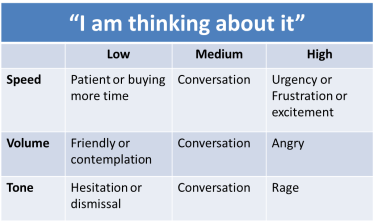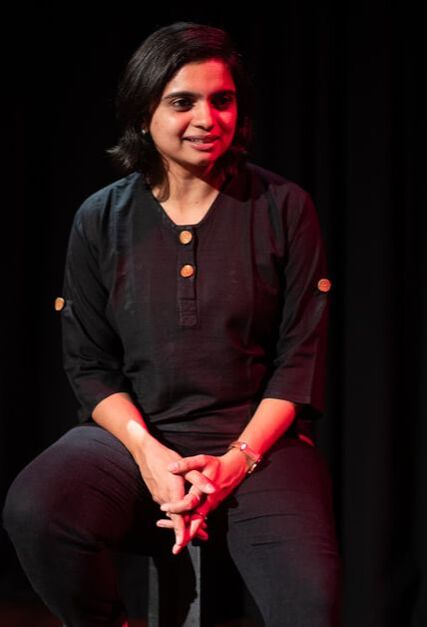|
Did you know that way we speak has 5 times higher impact on communication effectiveness than the words we speak? Did you know that our voice quality can influence our credibility? "A few years ago, I was making a presentation to my CEO on the design of the company's Intranet portal. I was quite excited about my presentation and was raring to go. So when it was my turn, I started by greeting everyone present with a high energy 'Good Morning' and introduced the objective of my presentation. Even before I moved to slide 1, the CEO remarked, 'You are too loud. Can you soften your speech please?' Though my presentation went well and I received a go ahead on the project, this comment was playing in my mind throughout the meeting and afterwards." When we are unaware of our voice patterns, we can end up being too loud in a conference room or too fast in a team meeting and lose the audience's attention at important moments. We need to carefully understand the intent of our speech, our physical environment and project a suitable voice quality. Each of us have a unique voice and our voice scales are different. We need to understand which scale works for us in different scenarios and adapt our voices accordingly to communicate the desired message. Activity: VQ Scale (Here's a Voice Quotient scale for you. 1 is the lowest and 10 the highest. 5 is a comfortable middle) Now here's a line for you: "I am thinking about it" Step 1: Read the line aloud at a comfortable volume. Step 2: Use the Pace Scale provided below and say the same line at a high speed and then at a low speed Step 3: Now say the same line in a high volume and then in a low volume using the Volume scale Step 4: Now say the same line in a high tone and then in a low tone. Did you notice how the various high & low combinations influenced the emotion and the mood that came through ? Our speech speed, tone and volume certainly contribute to the way we are perceived. The physical space and the context also influence the communication intent and message.
Outcome of Voice Quotient Training through theatre
0 Comments
"Here's the project vision and these are the desired outcomes"
This is a line you will hear quite often in meeting rooms and conferences. When projects are outlined, team members have to possess the ability to visualise outcomes. From envisioning product designs and packaging to new concept developments to consumer understanding, one has to be able to combine skills of imagination with knowledge and creativity. How does one train to visualise better? Are there ways to develop imagination skills? Theatre based training can enable visualisation and help participants understand the power of detailing, visual population and creative thought. Activity: Imagineer (Read the description below. Once you've finished, take 30 seconds and then scroll down to look at the questions) "He is wearing a striped blue tie. The tie has the letters KC embroidered on it. There is a metallic pen in his shirt pocket. You can smell musk. You hear the words, "Are we ready for this?" There is a moment of silence. He pulls out his pen, opens it and signs a document. There is applause and he smiles jubilantly." (Take 30 seconds now and imagine the scene) Now that you have a visual frame of this event, try and answer these questions. 1. What was the man's name? 2. What was the colour of his shirt? 3. What kind of hair did he have? 4. How tall was he? 5. Did he have a beard? 6. Were there paintings in the room that he was in? 7. What was the shape of the table? 8. What time of the day/night was it? 9. What brand of perfume was he wearing? 10. Was coffee/tea served at the table? How many questions did you have the answers to? We often default to the stated observations; limiting ourselves by what is available and provided, hence not seeing the bigger picture. By going beyond the obvious, by including what lies in the periphery – by imagining better, we are able to create a richer picture and a more compelling vision. When the mind trains to process information as visuals, it enables individuals and teams to develop the skills to look at fine details as they are composing the image in their mind's eye. Process: By playing characters or by portraying a variety of situations through their bodies and voice, one develops the ability to quickly fill up visuals with information to get an idea of the bigger picture. When they observe fellow participants going through the same process, they understand the possibilities and the different ways in which an idea can be portrayed. This enhances their field of imagination and builds up their image bank, which comes in handy the next time they set out to visualise a situation. Some situations where this could be of help
|
Archives
March 2020
Categories
All
|




